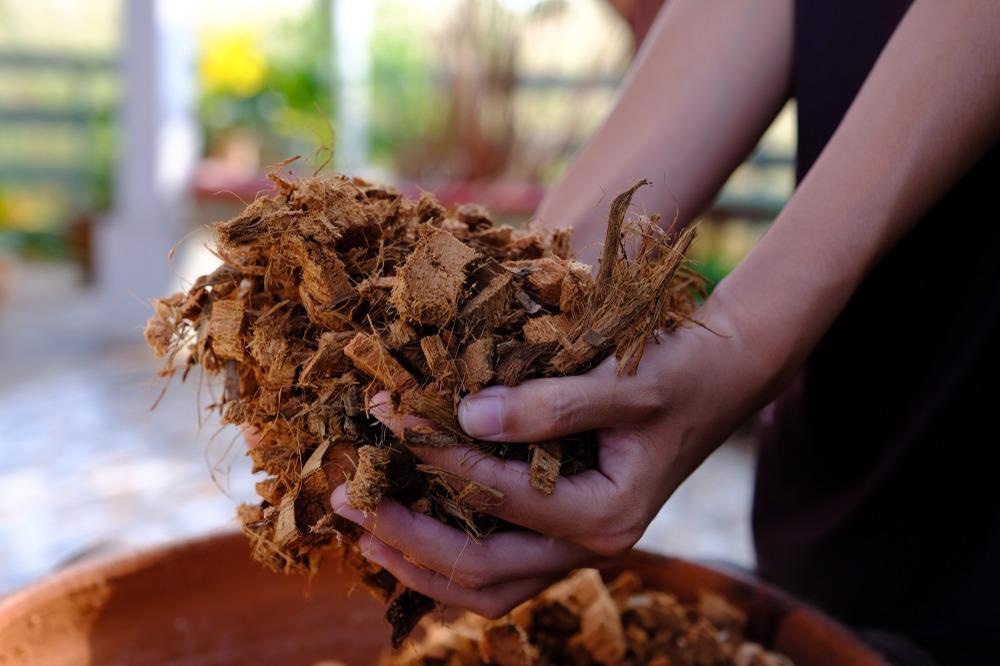The use of biomass as a sustainable, green resource for a multitude of industrial applications has been extensively explored in recent years. To investigate the novel use of biomass as a photocatalyst for H2O2 synthesis from water, a paper has been published in ACS Catalysis.

Study: Fabrication of a Photocatalyst with Biomass Waste for H2O2 Synthesis. Image Credit: EVANATTOZA/Shutterstock.com
H2O2 Synthesis
H2O2 synthesis is an economically important chemical process. This potent oxidizer has many commercial uses, including antiseptics, antibacterial liquids, and bleaching agents.
In biological systems, it is a short-lived molecule and is highly toxic to cells. Industrial uses of hydrogen peroxide include laundry detergents, organic peroxide synthesis, wastewater treatment, paper recycling, and the mining industry for ore leaching. Worldwide, 5.5 million tons of H2O2 is produced per year.
Hydrogen peroxide was discovered in the 19th century, with the first commercial factory producing the chemical opening in 1873 in Berlin. The electrochemical method of H2O2 synthesis was invented in 1908 when it was discovered that the chemical could be synthesized using sulfuric acid in an electrolysis reaction. The anthraquinone method was developed by IG Farben in the 1930s.
Traditionally, the synthesis of H2O2 is an intensive process, requiring organic solvents, alcohols, or salt electrolytes. Catalysts such as palladium have been employed in H2O2 synthesis.
Today, the most employed method is the anthraquinone auto-oxidation process, but there are environmental and safety issues associated with the large-scale employment of this process. The process is energy-intensive and creates substantial amounts of wastewater, gas, and solid waste byproducts.
Because of the challenges inherent to the synthesis process, researchers have turned to alternative processes and catalysts to reduce environmental harm, resource use, and cost. An attractive alternative method that has gained interest in recent years is using photocatalysis to synthesize H2O2 from water.
Synthesizing H2O2 from Water
Synthesizing hydrogen peroxide from water, one of the most abundant natural resources on Earth has vast potential. This has advantages in cost reduction, separation processes, and in situ applications. Currently, however, it is challenging due to shortcomings in synthesis methods.
Recovering H2O2 in the anthraquinone methods requires separation from organic materials, and electrochemical synthesis requires intensive energy input as well as various chemicals.
More on Using Biomass - Electrolytes for Lithium Batteries Obtained from Biomass
A promising method that can overcome the problems of cost, energy use, chemical use, and improve the green nature of hydrogen peroxide synthesis is photocatalysis. This technique uses light to synthesize chemicals.
To date, several photocatalysts have been studied for the synthesis of hydrogen peroxide. These include metal oxides and transition metals. The oxygen reduction reactions required to produce H2O2 are constrained in current photocatalysis methods by several factors.
These include unfavorable O2 adsorption by the photocatalyst, poor electron transfer, and difficulties in forming superoxide anions. Synthesis from pure water using these photocatalysts suffers from low performance.
HTTC Catalysts: Using Biomass for Photocatalysis
The key to efficient photocatalysis of hydrogen peroxide from pure water is the fabrication of advanced catalysts and optimizing strategies for oxygen reduction.
One alternative to conventional photocatalysts is using biomass. HTTC (hydrothermal carbonaceous carbon) is a carbon-based material produced by the hydrothermal treatment of organic material such as glucose, animal dung, and cellulose. One of the main advantages of this material is that it is abundant and can be produced in large quantities, significantly reducing the cost of catalysts.
The research in the paper published in ACS Catalysis used various biomass sources – paperboard, cellulose, sucrose, starch, and glucose. Experimental results demonstrated that cellulose was the most suitable biomass material to produce HTTC catalysts.
Elevated levels of H2O2 synthesis were achieved using the biomass-derived HTTC catalysts. H2O2 production by these catalysts is achieved by oxygen reduction. It was concluded that this was due to superior adsorption and activation on the surface of the HTTC catalysts.
The team concluded that due to the favorable results shown by HTTC catalysts, they are ideal candidates for solar-chemical energy conversion. As they are abundant and can be easily prepared, the potential for their large-scale industrial use is apparent and will save on costs associated with H2O2 synthesis, meaning that photocatalysis will become more commercially viable in the future.
The Future
The global demand for hydrogen peroxide is high, and the chemical industry must look for alternative methods to produce commercially important chemicals due to energy and resource-intensive synthesis, the use of potentially harmful reagents, and waste generated by synthesis methods.
The research in ACS Catalysis has presented a commercially viable H2O2 synthesis method using HTTC photocatalysts derived from cheap, abundant, environmentally friendly biomass which has the potential to vastly improve the commercial viability of large-scale photocatalytic synthesis of hydrogen peroxide.
Further Reading
Xu, L et al. (2021) Fabrication of a Photocatalyst with Biomass Waste for H2O2 Synthesis [online] ACS Catalysis | pubs.acs.org. Available at:
Disclaimer: The views expressed here are those of the author expressed in their private capacity and do not necessarily represent the views of AZoM.com Limited T/A AZoNetwork the owner and operator of this website. This disclaimer forms part of the Terms and conditions of use of this website.